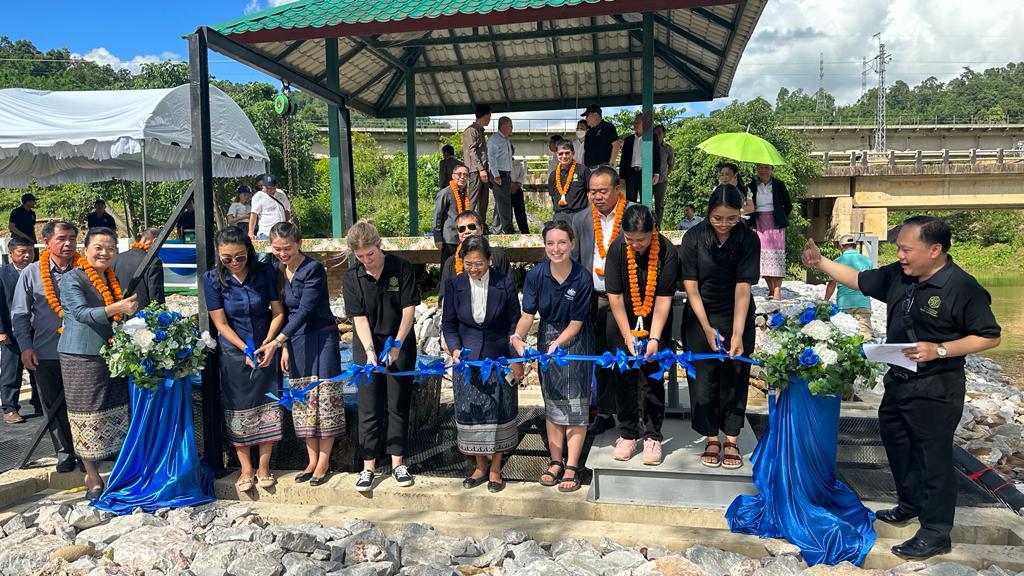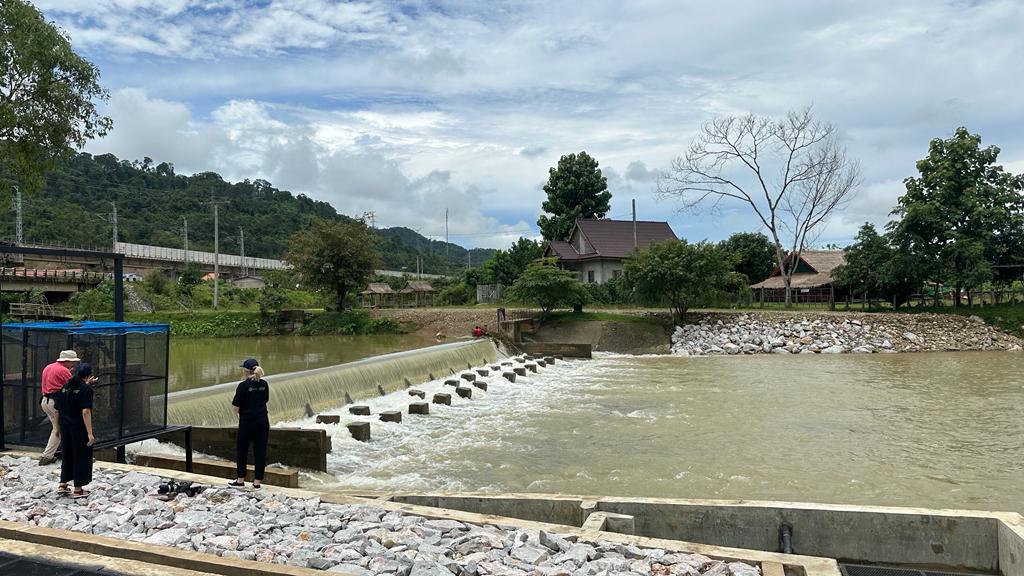Joint media release with: Australian Centre for International Agricultural Research
22 June 2023
H.E. Paul Kelly, the Australian Ambassador to Lao PDR, attended the opening of the Nam Pok Fishway in Vang Vieng District, Lao PDR today. The Nam Pok Fishway will provide local communities with technical solutions to restore declining fisheries and reconnect healthy waterways. It is also expected to increase the fishing income of up to 468 families and help preserve over 100 local fish species.
The Nam Pok Fishway utilises previous research funded by the Australian Centre for International Agricultural Research (ACIAR) through the Mekong-Australia Partnership, to construct fish passages that mitigate the impact of irrigation development on fish migration, with lasting economic and social benefits for river-dependent communities.

Fishways are particularly critical in Lao PDR as hydropower and irrigation development are essential to economic growth. Fishways benefit both the environment and people since they allow fish to migrate freely, access food sources and spawning grounds while maintaining a steady supply of fish for local fisheries. They have been found to boost the local economy and improve the livelihoods of those who depend on it.
Fish passes are being increasingly applied in Lao PDR since the construction of the Pak Peung Fishway, completed in 2012. Implementing targeted fishways for the local environment and fish species is important in building environmental and economic resilience, including by safeguarding fish from the impacts of development and fishing incomes for local communities. The Nam Pok site in Van Vieng demonstrates this type of tailored and successful fishway, it is intended to be studied and further implemented across other sites in Lao PDR.
Through the ongoing co-investment of ACIAR and the Australian Department of Foreign Affairs and Trade (DFAT), a team led by Charles Sturt University in Australia worked collaboratively with the National University of Laos and the Lao Department of Irrigation and Department of Livestock and Fisheries in the construction of the Nam Pok Fish Way in 2022 and 2023.

The Nam Pok project's critical success is due to the close engagement with the community in all aspects of design and construction. The local meetings with stakeholders provided the team with contextual information to select the ideal fishway design for this site.

Dr Chris Cvitanovic, ACIAR Research Program Manager said:
“The construction of Nam Pok can provide more insight for host and donor countries, investors, and irrigation agencies in choosing whether or not to include a fish passage in their development projects. Nam Pok demonstrates that fish passages can be successfully incorporated into development projects and provides an example for other countries to follow. It can also be used as a model to assess the potential benefits and costs of including fish passages in similar projects.
ACIAR is supporting the Lao government and donor agencies to prioritise fish passage construction in their future development projects. We are very keen to extend our partnership in scientific research with governments and development agencies. We believe that fish passage construction is a vital step for the future of Laos' sustainability and development. To this end, we will continue to provide our expertise, research, and data to assist in making informed decisions to ensure the most positive long-term development for environmental and economic outcomes”.
Paul Kelly, Australia’s Ambassador to Laos said: “Australia is committed to listening to the perspectives of the Mekong on shared challenges and how to meet them together. Through the Mekong-Australia Partnership, Australia is helping build environmental resilience across the Mekong subregion and is proud to be working with partners in Lao PDR to improve irrigation techniques in waterways to support greater environmental resilience and economic benefits for local communities”.
